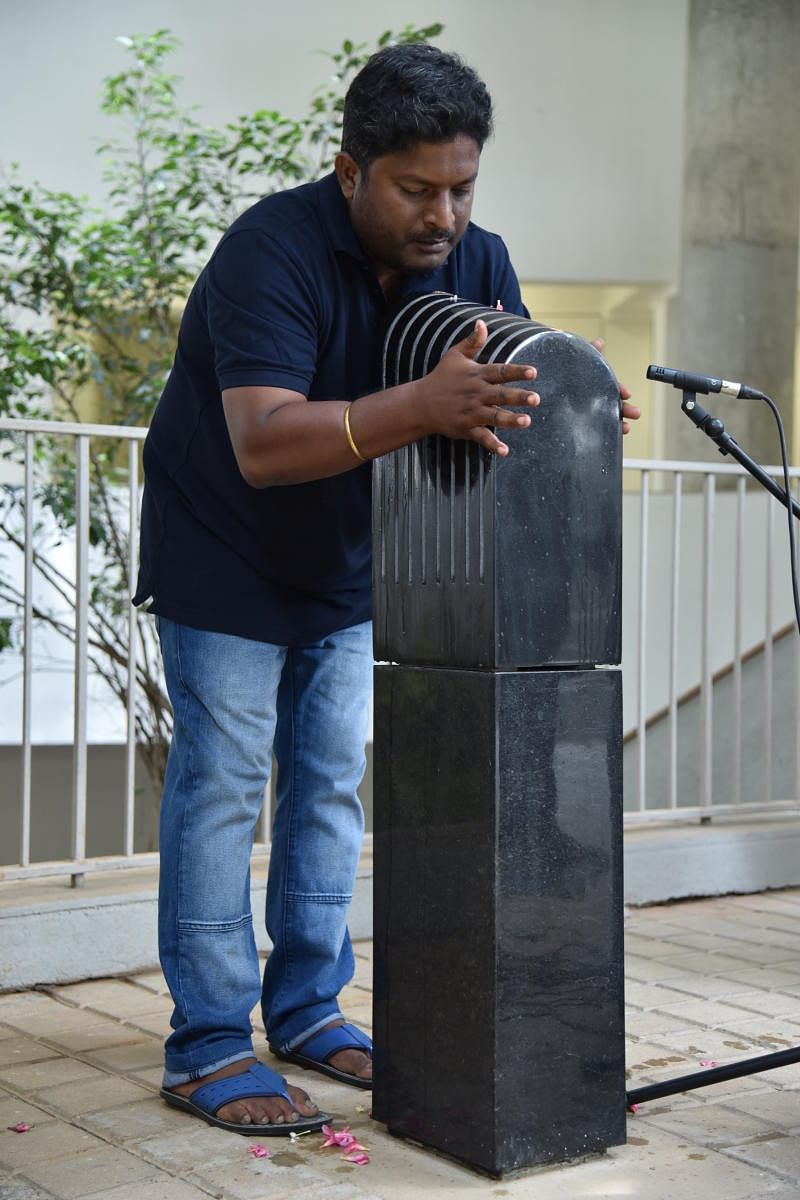Creating an enriching experience











One of the most tangible aspects of a musical experience comes from instruments. Musical instruments are commonly perceived as a musician’s accompaniments, but each instrument has unique craftsmanship, musical genre, history and values. In fact, each instrument carries a story with it that represents the cultural diversity and rich musical heritage of our country.
At the Centre for Indian Music Experience (IME), said to be India’s first interactive and experiential music museum, you will embark on a journey that enhances your understanding of music. The museum enables you to rediscover a bond with music, familiarise and understand various music genres — from classical to the contemporary. The instruments here largely cover Indian classical and folk music.
Instruments galore
One of the key tracks in IME is the Instruments Gallery, which currently showcases 110 instruments, which are mostly indigenous. A wide range of instruments is showcased here, including the Carnatic veena made out of jackwood, the Hindustani swaramandal which is used in many Hindu and Muslim rituals, kartal — a percussion instrument from Punjab, Sindhi sarangi from the Himalayas, fingerboard and pegbox, pena — a stringed folk instrument from Assam made from parched coconut shell belly, gottuvadyam — a 21-stringed fretless instrument, dilruba — a popular string instrument with a bow, the nagaswaram — a wind instrument, Burra katha dakki — a pitcher-shaped brass vessel instrument, vichitra veena — a plucked string instrument and many more.
Carnatic classical vocalist and IME project director Manasi Prasad says, “Each one of these instruments is priceless and has to be preserved for the posterity. They reflect our cultural diversity and the richness of our heritage. Above all, instrument-making is a dying art. In Kolkata, for instance, earlier, there was a whole street of Sitar-makers and today, there are only two. We need to preserve them with great care else they all will be defunct.”
Rare names are placed in front of me: Mayuri — a beautiful peacock-shaped instrument, rabab, pungi, Ravanahastha, ektara, gogona, intricately carved veenas from four different schools of veena making, yazh — an ancient harp and the list goes on. It is important to know the nuances that lay beneath each of these instruments, the raw material and the process.
Musicians from across the country have contributed their personal instruments and those belonging to their lineage to this museum. Some of the significant contributions are from Sudha Raghunathan who has donated Niraj Tambura and Anoor Anantha Krishna Sharma who has donated six instruments. In addition, the Hall of Fame features Bismillah Khan’s Shehnai donated by his family and M S Subbulakshmi’s Tambura donated by her grandson V Srinivasan. Thus, IME exhibits the iconic instruments from all musicians.
Reputed veena exponent Suma Sudhindra, who is the museum's director-outreach, says, “I am living my dream each day with IME. This is not just a place for creating a music experience, it has the transformational ability, it can be a great catalyser for our next generations. The museum presents a panoramic view of the diversity of Indian instruments. We have created a showcase based on different concepts and themes. The most challenging aspect was to create the digitised experiential element in the gallery. For us, it is a great treasure and a huge responsibility to respect our tradition and preserve its quintessential elements. Above all, with each instrument, each story, each era unfolds.”
Each of the instruments is displayed along with a 22-inch touch-screen and shot at 360 degrees to get a comprehensive view of the instrument and its nuances. There is information on the origin of the instruments, how it is made, construction details, ornamental details, creators, prominent musicians and legacies.
For people of all ages
Ghatam exponent Giridhar Udupa says, “Every Indian should definitely see this museum and experience what it has to offer. Words will not be able to do justice to the fantastic work done there. And it is meant for people of all ages.” Suresh Chheda, a visitor, agrees, “The museum offers an exhilarating experience while providing education and information on our classical music heritage.”
Other galleries in the museum include stories through songs, living traditions, songs of struggle and reaching out.
The museum is built on international standards and creates a fully immersive global experience. At the helm is a great team that has worked with passion, dream and vision to create this experience. It will impact you, teach you to respect the diversity and depth of our music heritage and leave you wanting for more. This is a way you can give back in your own simple way to your society, your community, as Suma says. For more details, visit www.indianmusicexperience.org.